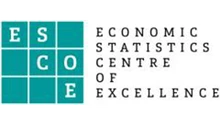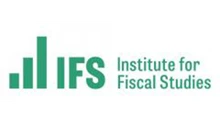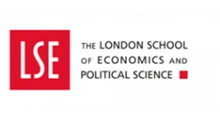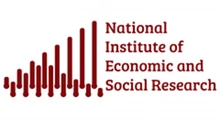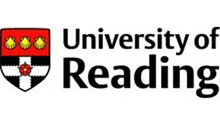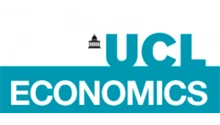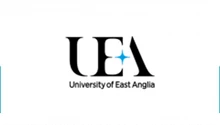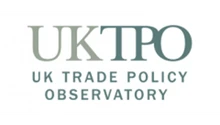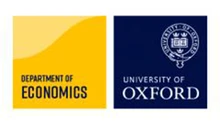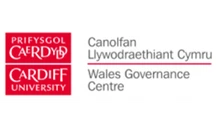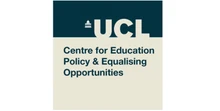The trade war between China and the United States will have knock-on effects on Africa, primarily from reduced demand for exports of raw materials. To protect their economies and to seize new economic opportunities, governments across the continent should promote deeper intra-regional integration.
Global trade has been guided by economic theories emphasising the benefits of free trade for over two centuries. Beginning with Adam Smith’s The Wealth of Nations in 1776 and David Ricardo’s theory of comparative advantage in the early 19th century, economists have argued that nations should specialise in producing goods efficiently and trade with others to maximise global welfare (Smith, 1776; Ricardo, 1817).
Later works, developed in the 20th century, explained trade patterns based on resource abundance, while neoclassical theories addressed factors like increasing marginal costs and imperfect competition (Heckscher and Ohlin, 1933; Robinson, 1933; Hicks, 1939).
These principles shaped global trade policies throughout the 20th century, culminating in institutions like the World Trade Organization (WTO) in 1995, which promoted reduced trade barriers and multilateral cooperation.
Today, as deglobalisation threatens to reshape the international landscape, a new economic and trading system is needed – one that addresses the realities of a fragmented and protectionist world.
The tariffs imposed by President Trump in his second term include record-high duties that average 24% and targeted measures of up to 125% on Chinese imports. These have shattered the foundations of traditional trade theories such as competitive and comparative advantage.
The unilateral actions have also disrupted global supply chains, undermined multilateral agreements and exposed the inadequacy of institutions like the WTO to manage modern trade conflicts. The mechanisms of classical trade theory and the Bretton Woods institutions (the International Monetary Fund, IMF, and the World Bank) are becoming less relevant and need to be re-evaluated to address modern challenges more effectively.
What are the implications of Trump’s tariffs for Africa?
This new order presents both challenges and opportunities for countries in Africa. Developments such as US tariffs, the erosion of foreign aid programmes (including reduced support from agencies like USAID and official development assistance, ODA), the weakening of financial buffers and the diminishing role of lenders of last resort like the IMF may seem to be bad omens. But they can serve as a wake-up call for the continent.
These developments urge a shift in mindset, prompting African governments to take control of their economic future – moving away from external lifelines and towards self-reliance and resilience.
Historically, external (or exogenous) shocks to the global economy – from financial crises to pandemics – have disproportionately burdened developing nations, particularly in Africa, exacerbating vulnerabilities and widening inequalities.
Yet in the current realignment, Africa finds itself unexpectedly insulated from the worst disruptions and, with strategic foresight, it could emerge as a net beneficiary. The continent’s limited integration into global value chains, which is often viewed as a weakness, now serves as a buffer against external volatility.
But this advantage will be fleeting unless African leaders can seize the moment to steer towards self-reliant growth. They have the opportunity to transform insulation into opportunity.
On the trade front, the potential impact of increased US tariffs on African economies comes primarily from the ripple effects of tariffs imposed on China, Africa’s largest trading partner.
As China faces economic deceleration due to higher tariffs, the knock-on effects may reshape global demand and trade dynamics. US tariffs on Chinese goods are slowing China’s production and reducing its demand for raw materials from sub-Saharan Africa, which could have a significant effect on African exports.
Our analysis shows that this diminished demand threatens African exports, particularly from resource-intensive and oil-exporting nations. As a result, African GDP growth rates are projected to face reductions of 0.4% in 2025 and 0.6% in 2026, meaning economic growth rates of 3.8% in 2025 and 2026 (see Figure 1).
Figure 1: Projected African GDP growth rates under tariff and no tariff scenario
Source: author's calculations
What are the economic challenges and opportunities for Africa?
Good news lies in Africa’s relatively limited exposure to the global economy, which may shield it from some of the harsher impacts of shifting trade dynamics. But this limited direct impact reflects the modest trade volume between the United States and Africa ($71.6 billion in 2024). This also highlights the underuse of initiatives such as the African Growth and Opportunity Act (AGOA) – US legislation to improve economic relations with sub-Saharan Africa.
While US exports to Africa grew by 11.9% in 2024, imports from Africa increased by only 1.9%, underscoring uneven benefits (Office of the United States Trade Representative, 2025). Countries such as Kenya, Lesotho, Mauritius and South Africa have successfully leveraged the AGOA in sectors like apparel and automotive manufacturing.
But many other countries continue to face structural challenges, including limited industrial capacity and reliance on raw materials. This persistent reliance on primary commodities (see Figure 2) underscores Africa’s struggle with the commodity-dependence trap (whereby countries that are reliant on exporting commodities are vulnerable to fluctuating commodity prices and struggle to diversify their economies).
Figure 2: Composition of Africa's gross goods and services exports, 1996 to 2022
Source: Harvard Growth Lab
The prospect of renegotiating US debt for more favourable trading terms – reminiscent of the ‘Nixon shock’ – adds complexity to Africa’s economic outlook. With over 20 African countries already at risk of debt distress amid rising interest rates and fiscal tightening (reducing spending and/or raising taxes), shifts in global capital flows could further constrain access to finance unless more equitable terms are secured (IMF, 2023).
This moment of potential financial realignment underscores the need for Africa to engage proactively in global reforms. Calls for a ‘new Bretton Woods moment’ present an opportunity to advocate fairer financing. At the same time, initiatives like recycling Special Drawing Rights (SDRs) – international reserve assets created by the IMF – and establishing regional financial institutions could help to address the continent’s $402 billion annual financing gap and enhance financial sovereignty (African Development Bank, 2023).
The Alliance of African Multilateral Financial Institutions (AAMFI) is central to this effort and requires urgent activation. The alliance can help to enhance collective bargaining power, pool resources and advance African-led solutions to reduce dependence on external creditors.
Beyond trade, Africa faces both challenges and opportunities in the weakening of financial buffers and the diminishing role of lenders of last resort, such as the IMF. The erosion of foreign aid programmes, such as USAID, has disrupted critical sectors like healthcare, agriculture and education, with millions at risk of falling into extreme poverty.
Reduced aid from major donors, coupled with fiscal vulnerabilities and widening current account deficits driven by volatile commodity markets, have left many African governments struggling to sustain essential services (Institute for Security Studies, 2025). The IMF’s potentially constrained capacity to provide affordable support – in the context of a shifting global financial system – further limits Africa’s crisis response and development options.
Yet these pressures may also spur a substitutional shift, pushing African nations to build stronger economic foundations and chart a path towards lasting stability and sustainable development.
What should African countries’ economic priorities be?
To survive in a rapidly shifting global economy, Africa must champion new economic frameworks that prioritise sustainability and regional cooperation while advocating African-oriented institutions and trade mechanisms that are aligned with its development goals.
A first priority is strengthening real economies. Industrialisation, export diversification and regional value chains must be at the core of this transformation.
Africa’s industrialisation levels are limited, with only a few countries having more than 15% of their GDP in manufacturing (United Nations Industrial Development Organization, UNIDO). There is also a persistent reliance on primary commodities, with only 17% of extra-continental exports being processed goods, compared with 41% in intra-African trade (United Nations Conference on Trade and Development, UNCTAD).
Further, resource-based manufacturing dominates the sector, accounting for nearly half of total manufacturing value-added, while medium- and high-technology manufacturing activities remain underdeveloped (UNCTAD, 2023). This lack of diversification is reflected in Africa’s low economic complexity (see Figure 3).
Figure 3: Economic Complexity Index (ECI) for 24 African countries, 2023
Source: Harvard Growth Lab’s Observatory Economic Complexity (OPEC) via Beyene (2024)
Note: a lower ECI value indicates a less complex economy. The ECI condenses economic growth, technological advancements, inequality, regional disparities, and resilience.
Strengthening industrial capacity would put African businesses in a better position to seize emerging opportunities from global shifts, such as import substitution and business relocations. These trends currently favour Asia and Latin America due to their more advanced manufacturing sectors.
This approach would also align with reducing reliance on external financial buffers, as it underscores the capacity of African countries to pursue alternative paths to sustainable development. For example, while IMF loans are often framed as necessary for economic stability, their focus is not on fostering long-term growth or enhancing competitiveness, and they may even come with conditions that hinder domestic policy autonomy.
Historically, many nations have achieved significant economic milestones without IMF assistance. A notable example is Egypt in the 1980s and 1990s under Atef Sedky, an era that demonstrates the potential for self-directed economic strategies (Mohieldin et al, 2024).
Besides what is required under this starting point, to address the weakening of financial buffers and the diminishing role of lenders of last resort and foreign aid, African nations should prioritise domestic resource mobilisation and strategic investments.
Domestic resource mobilisation involves enhancing tax collection, plugging revenue leakages and managing public debt effectively. Strategic investments focus on directing resources towards infrastructure, education and technology to build a strong foundation for economic diversification. These strategies align with alternative development models that emphasise self-sufficiency.
What about the potential of greater regional cooperation?
The second priority for Africa must be to strengthen African-oriented institutions, particularly the continent’s regional economic communities (RECs). These institutions – which include the Common Market for Eastern and Southern Africa (COMESA), the Economic Community of West African States (ECOWAS) and the Southern African Development Community (SADC) – serve as the building blocks for regional integration and economic cooperation.
RECs are making progress, but the overall evaluation score for continental integration is 0.62 on a scale of zero to one. The dimensions of free movement and trade, scoring 0.68 and 0.66 respectively, are the main drivers of this score (ALG Global, 2024).
Significant efforts are required to meet targets in other areas, such as financial and monetary integration, where challenges persist.
To address these challenges, African countries can adopt several strategic approaches. Strengthening regional financial institutions, such as the African Monetary Fund and the African Central Bank, is critical to enhancing financial stability and coordination. Harmonising financial regulations and standards across regions can facilitate cross-border transactions and investments.
In addition, promoting regional currency arrangements and exploring the feasibility of a single African currency could enhance economic integration and reduce transaction costs. A key component of this effort is the establishment of an African exchange rate mechanism, which would stabilise exchange rates and reduce settlement risks, thereby facilitating more efficient cross-border payment systems (Moustafa and El-Shal, 2024).
By enhancing their institutional capacity, aligning their growth plans with frameworks like the African Union’s Agenda 2063, and improving monitoring and evaluation systems, RECs can address Africa’s development challenges more effectively (New Partnership for Africa's Development, NEPAD). Their role in harmonising policies, facilitating intra-African trade and driving collective economic strategies is crucial in this new norm characterised by deglobalisation and protectionism.
The African Continental Free Trade Area (AfCFTA), which builds on the progress made by RECs, serves as a prime example of Africa’s potential to boost intra-African trade and foster regional integration.
But realising its full potential will require sustained political commitment and a strategic reassessment of Africa’s role within an increasingly fragmented global economy. Full implementation is urgently needed. If African leaders do not recognise the importance of this moment, then the opportunity for meaningful transformation may slip away.
In the context of the new global order, as global economic uncertainties persist, an African Gold Bank could offer a secure store of value, protecting African economies from external shocks and aligning with broader ‘de-dollarisation’ efforts to enhance economic sovereignty. By providing a centralised platform for managing and storing gold reserves, it could support African nations in diversifying their reserves and hedging against currency devaluation.
This institution could also foster regional economic integration by leveraging gold as a common asset, potentially creating a gold-backed currency or facilitating gold-denominated transactions within Africa. Additionally, it would support gold-producing countries like Ghana and South Africa by maximising the economic benefits of their gold resources and promoting sustainable mining practices.
As Africa navigates this critical juncture, its trade renaissance in the evolving global order hinges on its ability to adapt, innovate and assert a stronger voice in shaping the global economy.
Where can I find out more?
- The African continent is (relatively) immune to Trump’s tariffs: CNBC Africa article.
- Could Africa still be hard hit by Trump’s tariff tantrum? Article from the Institute for Security Studies.
- African Trade and Economic Outlook (ATEO) 2025: African resilience in a changing world order: Report from the African Export Import Bank (Afreximbank).
- United Nations Economic Commission for Africa: Data and statistics.
- Africa’s continental free trade area: a stepping-stone to integration? Column from 2019 by trade economist Jaime de Melo at The Forum.
Who are experts on this question?
- Amira El-Shal
- Eman Moustafa
- Mahmoud Moheildin
- Paul Collier
- Yusuf Daya
- Jaime de Melo









